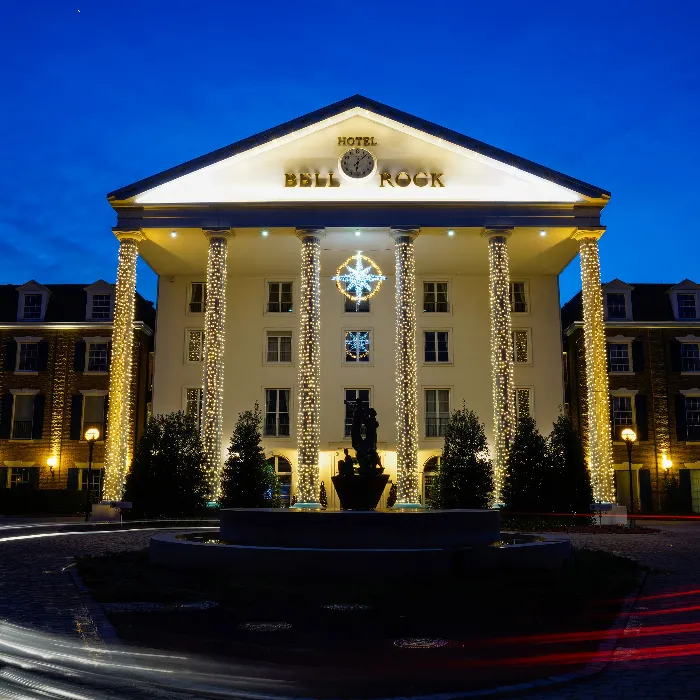Hotel photography requires a sensitive feel for light, perspectives, and composition. Especially in small rooms, where the challenge is amplified by sparse lighting and cramped conditions, it is important to apply the right techniques to highlight the advantages of the space. In this tutorial, you will learn how to create impressive HDR shots with different exposures.
Main insights
- Wide-angle lenses are essential for photographing small spaces effectively.
- Distorted lines should be avoided to achieve a professional look.
- A mix of artificial and daylight can significantly enhance the atmosphere.
- The correct exposure time for screens is important to avoid distracting lines.
- An open front door creates an inviting atmosphere and promotes light entry.
Step-by-step guide to hotel photography
1. Find the right perspective
To optimally present the hotel room, you should first look for a second perspective. You can start from the entrance area and then switch to the opposite side. This allows you to highlight the different parts of the image that were lost in the first shot in the second shot. Make sure to move around the room and try different angles to display the room in various ways.
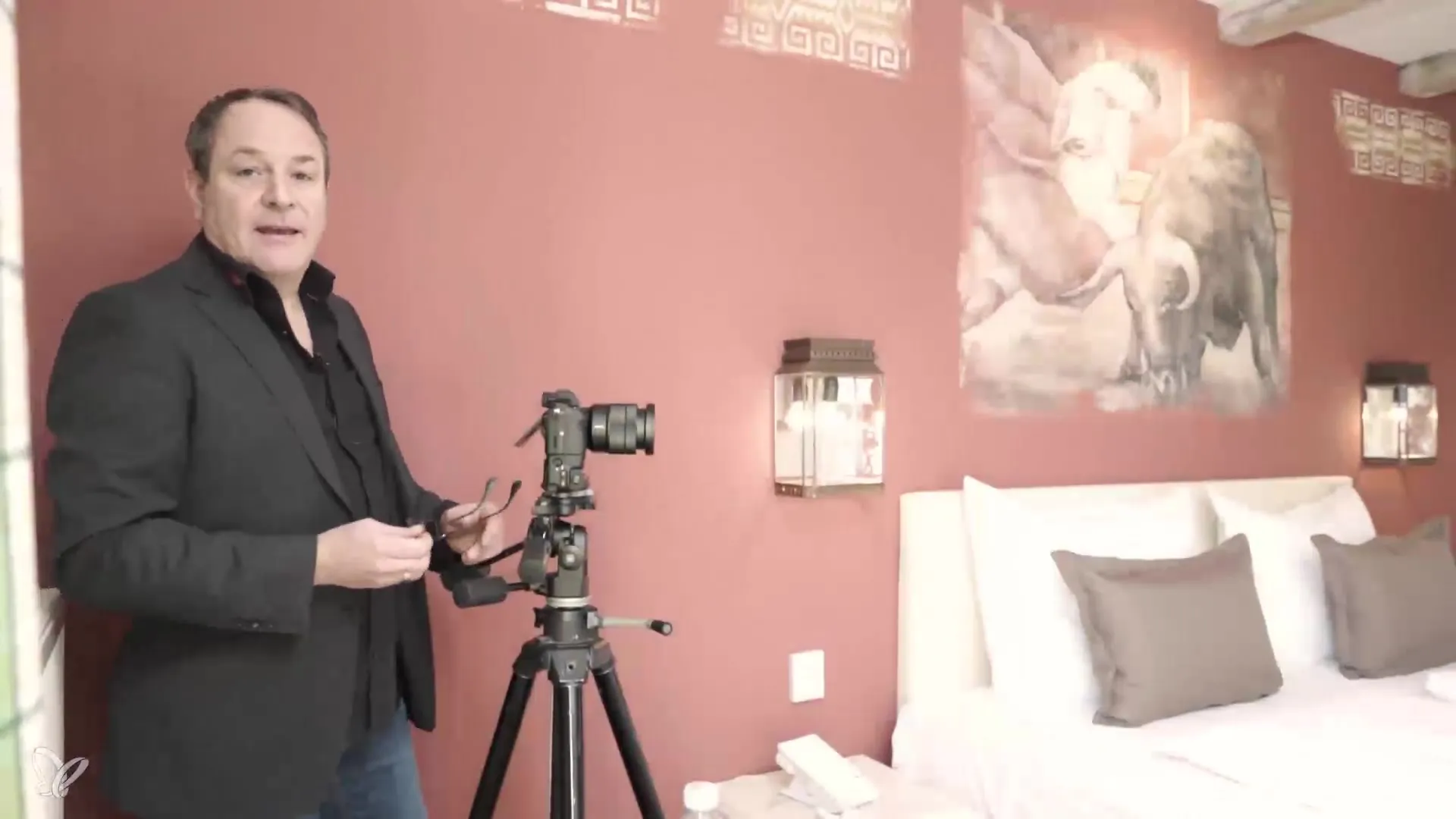
2. Use a wide-angle lens
Especially for small rooms, using a wide-angle lens is crucial. It allows you to capture the space in a way that makes it appear larger and more open. Make sure to align the camera parallel to the walls to avoid distorted lines. This gives your photos a professional touch.
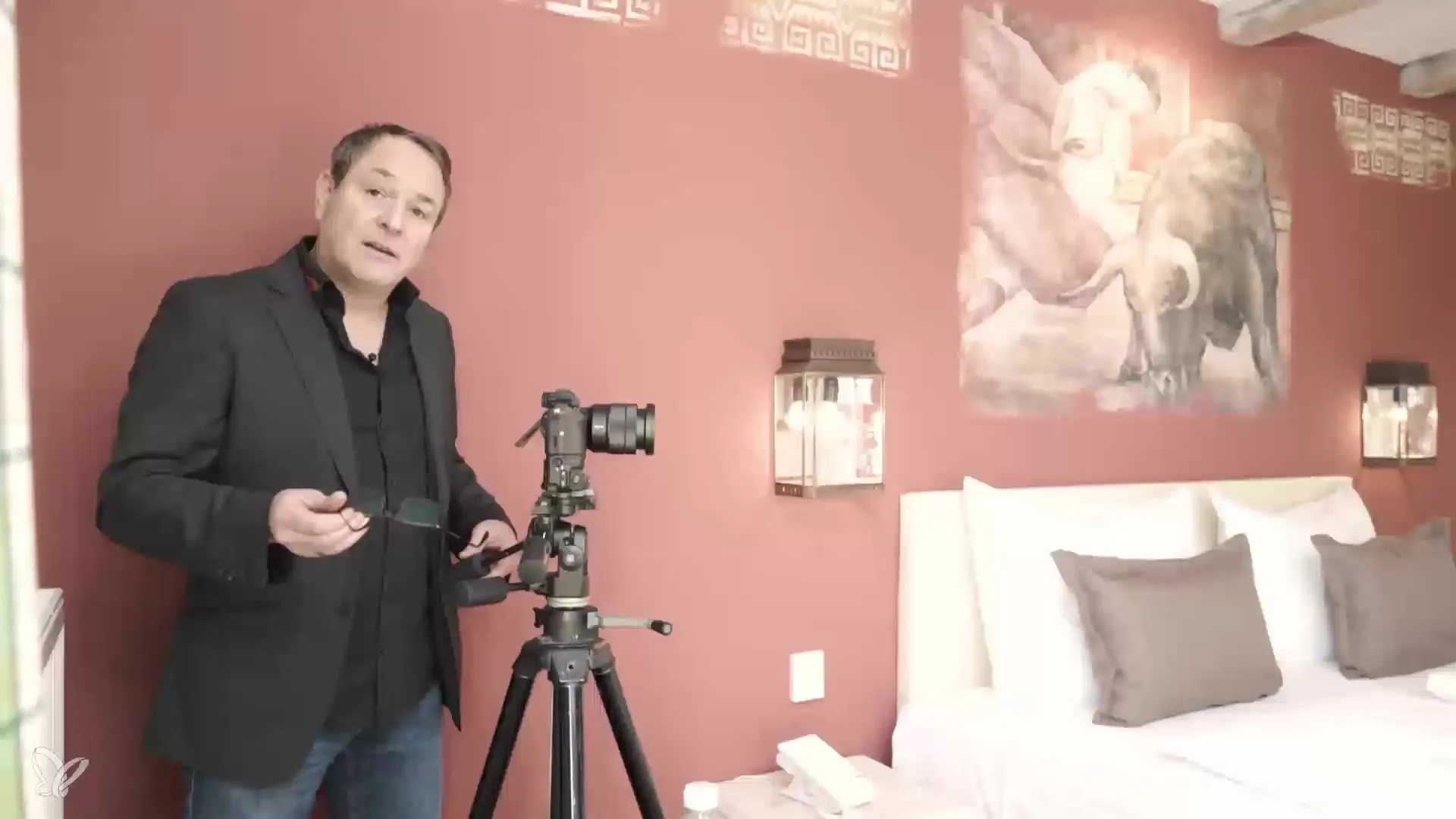
3. Pay attention to lighting
Make sure to turn on all the lights in the room. A mix of artificial light and daylight can help create a pleasant atmosphere. The light that shines through the window can enhance the colors in the room. Also, position the television so that a positive image or picture is visible to improve the overall image.
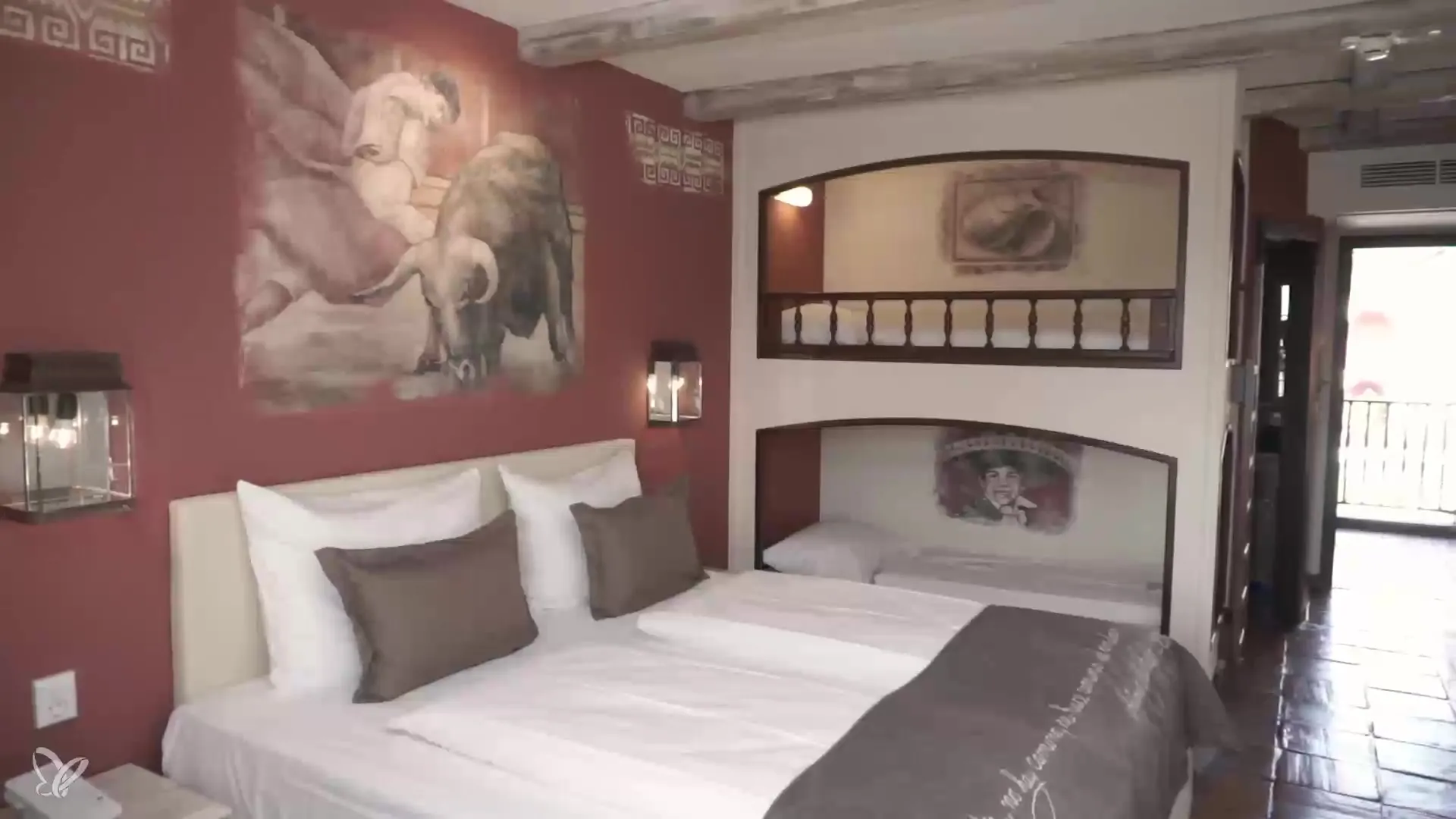
4. Take a test shot
First, take a test shot to check the exposure settings. An aperture of 8, a shutter speed of 1/6 second, and an ISO of 100 are good starting points. Keep the focal length between 16 and 20 mm to achieve the best result in terms of the image crop.
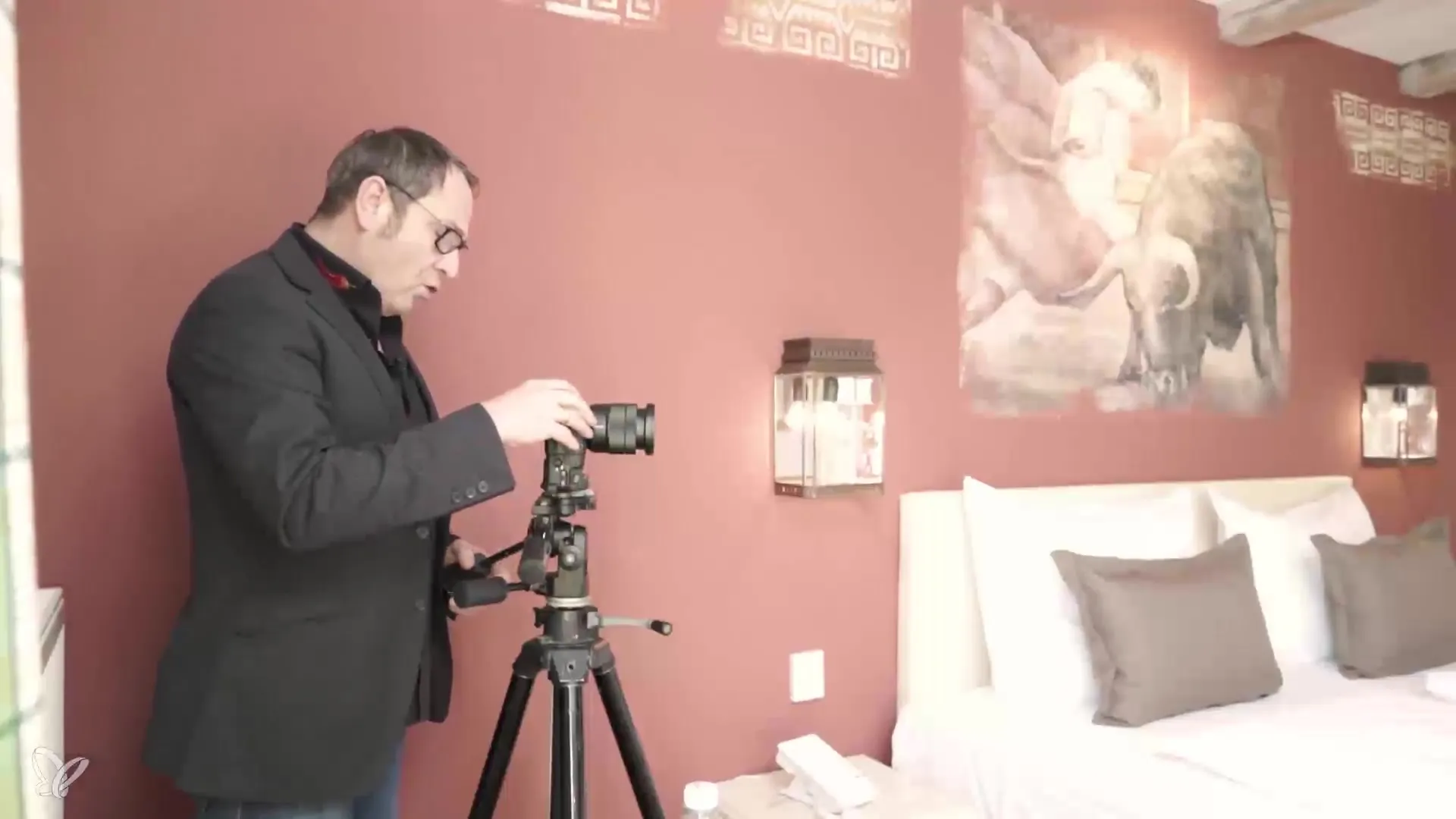
5. Vary the arrangement of objects
To bring more life and variety to your photo, you can rearrange objects in the room. A bouquet of flowers can be useful to create visual interest. Position it on the entrance table to improve the composition and make the space more inviting.
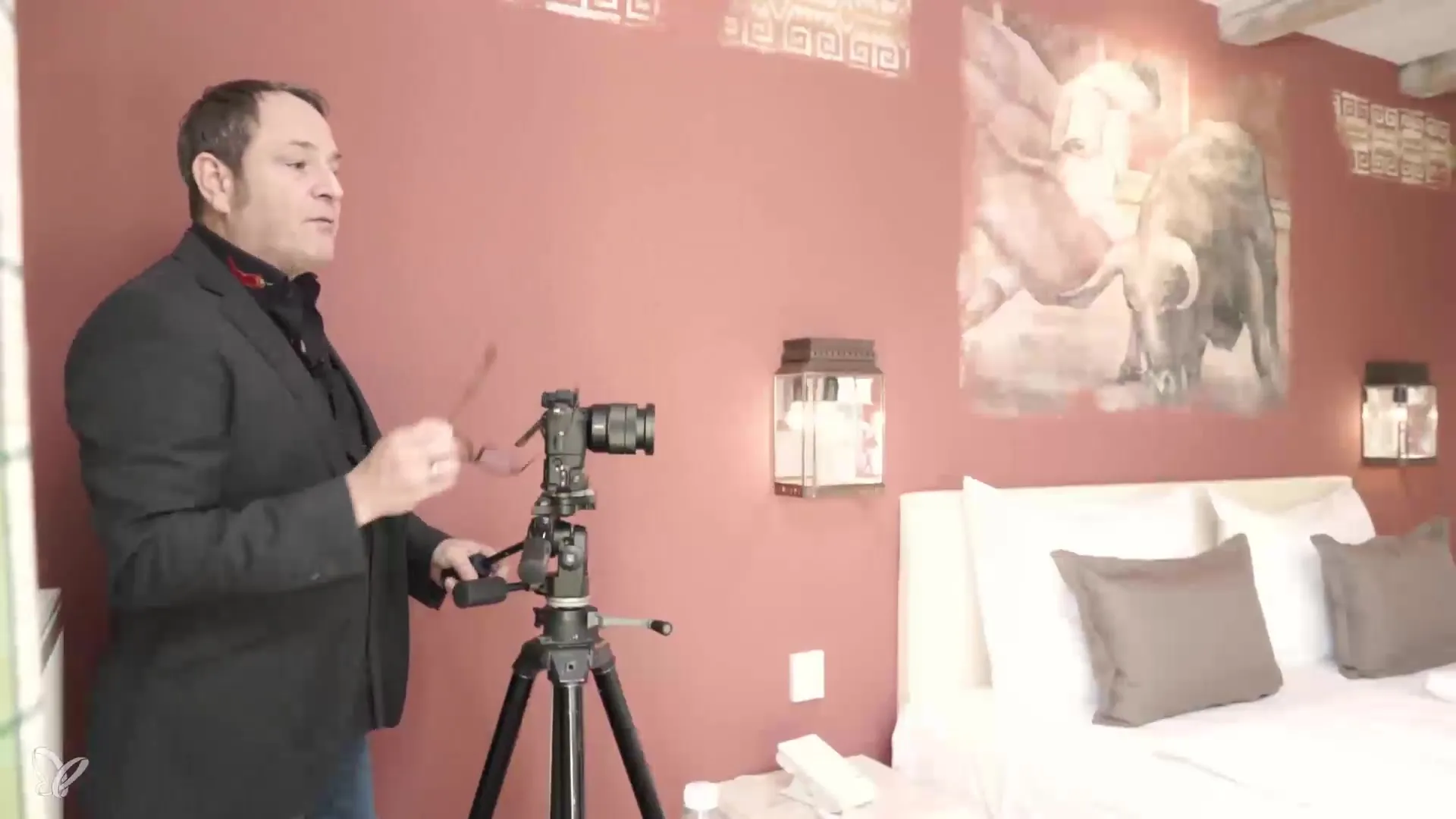
6. Keep the front door open
An open door can make a big difference. It brings more light into the room and signals to guests that they are welcome. Make sure there are no dark corners in the image that might be distracting or make the space feel uncomfortable.
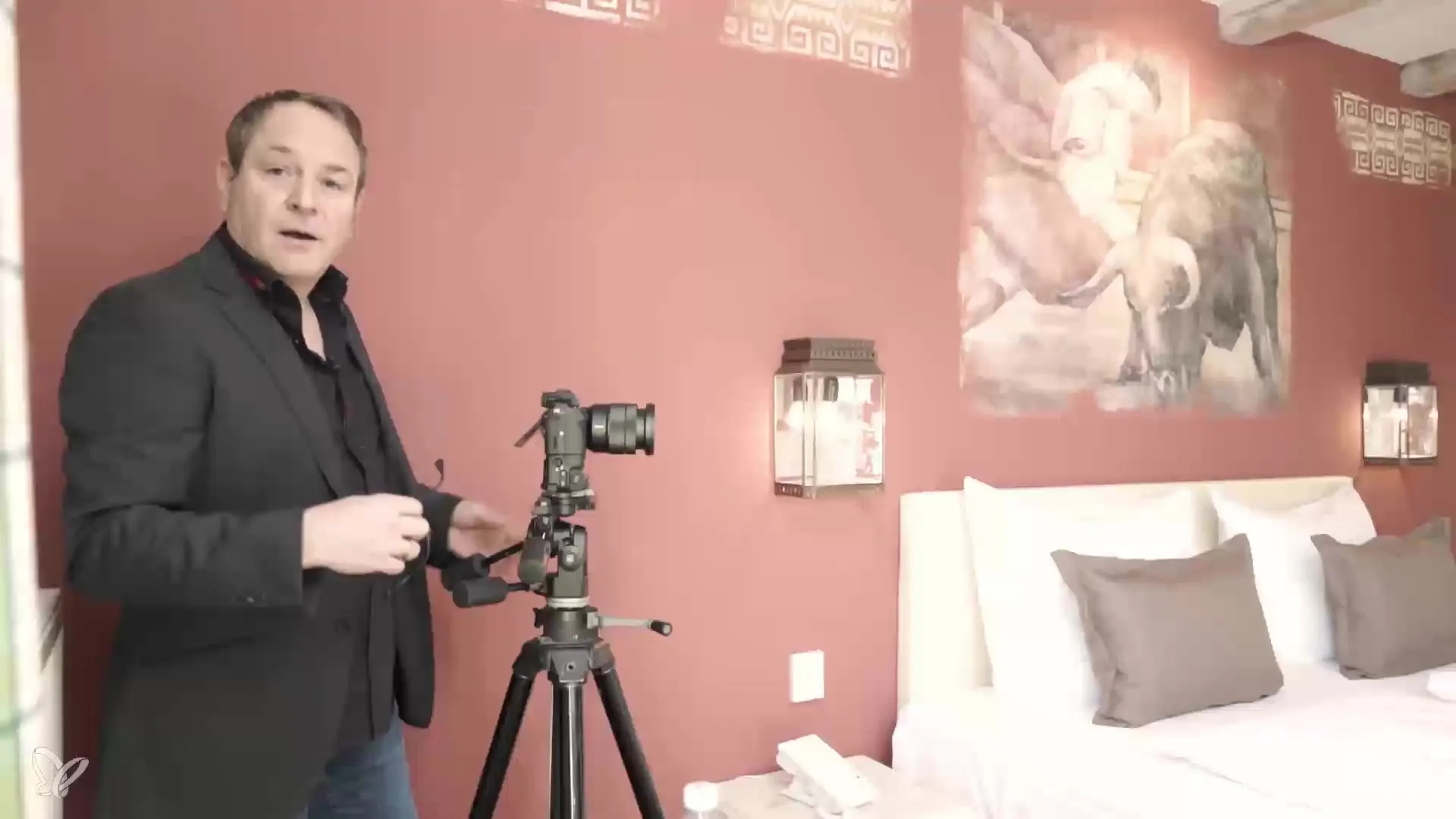
7. Take an exposure series
Create an exposure series with different exposures (+1 and -1) to ensure you get the optimal image. Pay attention to the image on the television to ensure that no distracting ads or images are displayed there.
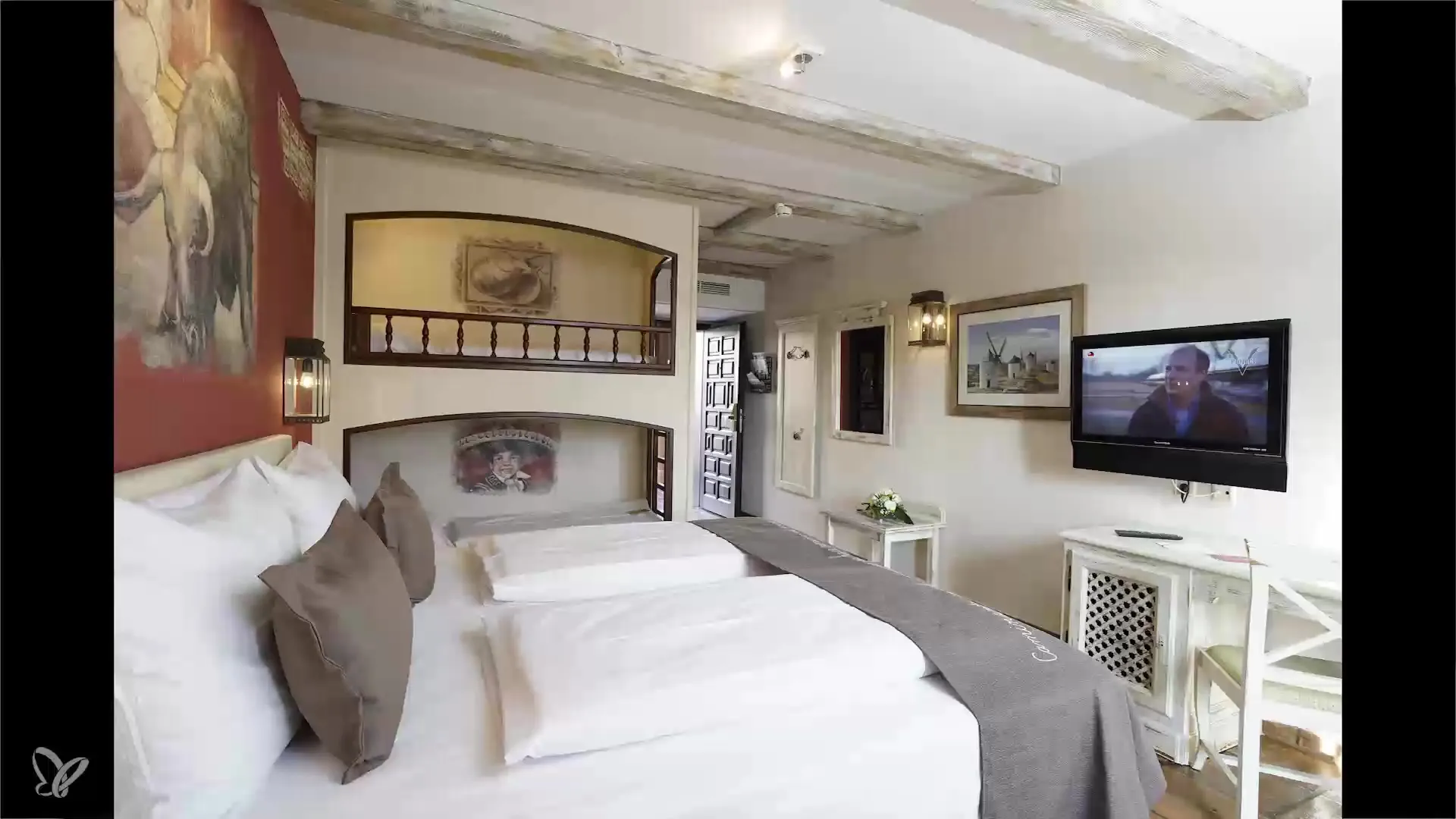
8. Use the television strategically
In many hotels, televisions are programmed to display a specific image or logo when turned on. If you time this moment correctly, you can create a photo that showcases the hotel properly. A nice image or the hotel logo on the television can enhance the overall image.
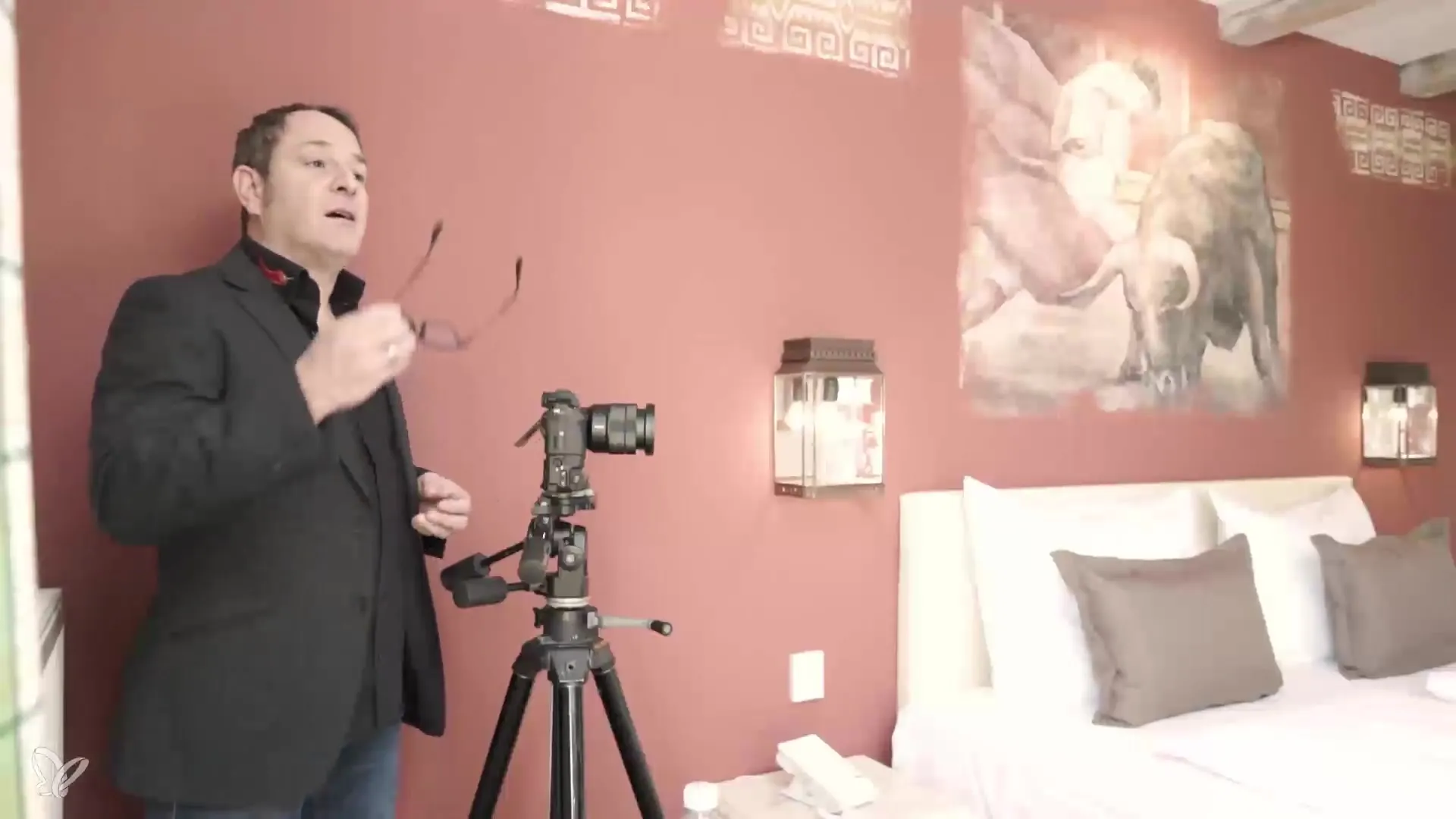
Summary – Guide to hotel photography: Techniques, subjects & practice – Second perspective in the small room
Hotel photography in small rooms requires technical skills and creativity. By using wide-angle lenses, clever lighting design, and thoughtful perspectives, you can create impressive photographs that highlight the best aspects of the room. Avoid distorted lines, make optimal use of the lighting, and achieve an interesting image composition by varying the arrangement of objects.
Frequently asked questions
How do I avoid distorted lines in my photos?Ensure that your camera is aligned parallel to the walls to avoid distorted lines.
What aperture should I use for hotel photos?An aperture of 8 is a good starting point to let in enough light and control depth of field.
Why are HDR shots beneficial?HDR shots allow for balancing large differences in brightness between dark and light areas, resulting in a more balanced image.
How do I arrange the room for the photo?Vary the placement of objects in the room, such as bouquets or furniture, to create more visual interest.
What is the best time for the shoot?The best light is obtained in daylight; try to take the shots at times when the light falls best into the room.
